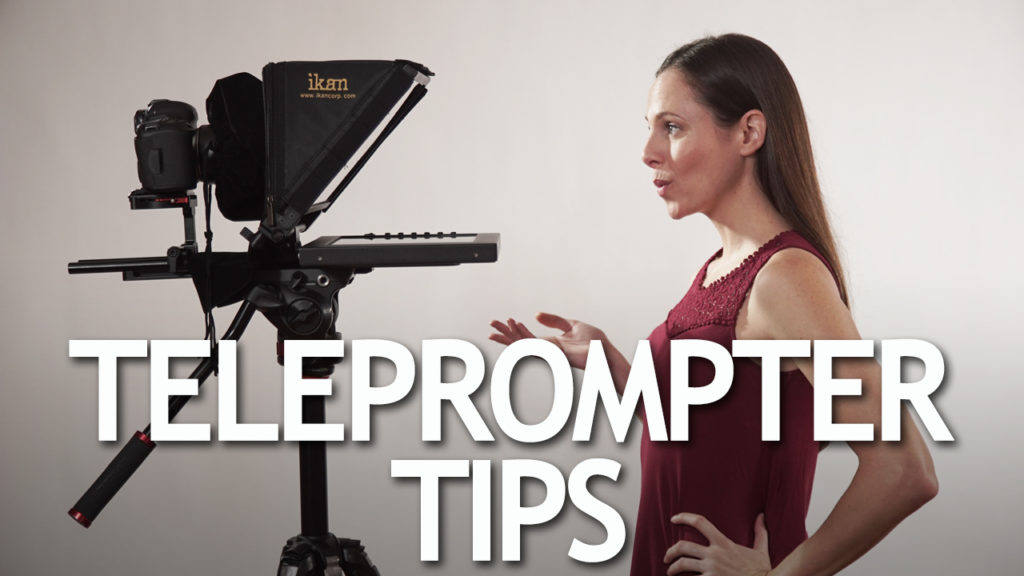Hi, this is Jay P. Morgan. Today on The Slanted Lens we’re going to take a look at teleprompters. Why you need a teleprompter, and how to use it.
Teleprompter
Today we’re taking a look at teleprompters. In the last three months I’ve been using them constantly on set. Long shoots with tons of dialogue on teleprompters. And some times it can be arduous and very difficult if you don’t know a few things. So here are some things I’ve learned.
Ease of Use
My first tip is to look for what you need in a teleprompter. Ease of use is so important. The teleprompter I was using took forever to set up and I was tired of the hassle. So the first thing I looked in my new teleprompter was portability. I ended up choosing the PT1200 from ikan, for just that reason. It is incredibly portable. So when I went to Colombia in January, I packed it up in an SKB case, threw it on an airplane, and flew to Colombia. It worked fabulously while we were there, we put it back on the airplane and flew it back. So choose a teleprompter that fits the portability you need and will be easy to use.
Clean It
Tip number two is to clean all the surfaces of your teleprompter before you’ve set it up. You’ve got the monitor, two pieces of glass, and the camera lens. It’s a pain to assemble everything and then realize you’ve got a smudge or a spot of dust in where you can’t reach. So clean it before you put it together. You can use microcloth and just wipe everything down.
Flag It
Number three, flag the teleprompter. Because you’ve got so many glass surfaces, light can get in there and really cause a problem for you. Make sure you flag the entire teleprompter and prevent that from happening.
Use Large Type
Four, get the type large on the screen. Not only so that the person can read it, but also to avoid their eyes shifting back and forth as they read. People see that and know right away that a teleprompter is being used. You want the talent to look straight into the lens. If the type is large enough they can just perceive it as it goes up. So it’s really important to get it the right size.
Prep Your Script
Number five, prep your script beforehand. Take out everything on the teleprompter except what you want your voiceover or actor to say. Get rid of all the other actors’ lines. If you just have their voiceover it will go a lot faster.
Of course in doing that, there’s always the danger that you’ll miss a line. So have a script on hand as a director and mark off each section as your actor goes through it. If you do that you’ll know if a line has been missed, either by the actor or when the lines were being transferred to the teleprompter. That’s pretty important. When you’re doing this for six or eight or ten days, you’d be shocked at the number of things that happen like that.
Text Embellishment
Tip number six- text embellishment. On a teleprompter, the type is very basic. It’s just one font, one size, one color. So you use other things to give the actor cues about how to read the dialogue. A comma, so the actor breaks without stopping, or we use quotation marks when we want them to know we want the line or word emphasized.
Read the Script Out Loud
My seventh tip is to read your script aloud. It’s important to make sure that your script is conversational. Read it out loud so you can make sure it’s understandable and to know what it sounds like. I like to sit down with the writer and read the whole script out loud together. It really makes it flow better and helps ensure you’re getting your point across.
Allow Time to Rehearse
Tip number eight, give your teleprompter operator and the actor time to get into a rhythm together. The teleprompter is moving the entire time. The person who’s running it has got to get into a groove with the actor. It’s important that the teleprompter is moving at a speed the actor is comfortable with so that the script sounds natural. Allow a little time for them to rehearse before you start shooting to establish that rhythm.
Loosen Up and Be Lively
Number nine, just because you’re on a teleprompter doesn’t mean you can’t use your hands. Get those hands up. Let the actor become comfortable gesturing. Make this interesting. Don’t let them stand at attention the whole time so they look like a robot. Get those hands up.
ikan
ikan has a lot of great teleprompter models, and they will serve you depending on what you want to choose. I needed portability. For me, portability and quick set up were the most important. But there are others there that will meet different needs for different people.
This is not sponsored by ikan, but I did call them up and say, “ikan, I love this teleprompter, send me one.” And they said, “Ok, great. Here’s one.” So I recommend checking them out to see what they have
So there are a few tips on how to run a teleprompter. I’m not an expert on teleprompters, although after the last three months I think I have some pretty good ideas on how to use them and some things to watch out for. Hopefully these will help you avoid some problems when you use a teleprompter.
Keep those cameras rollin’ and keep on clickin’.
-Jay P.


